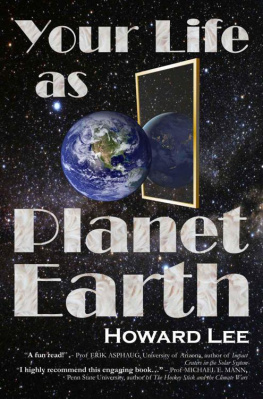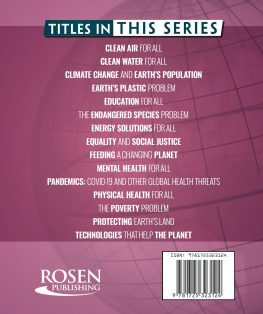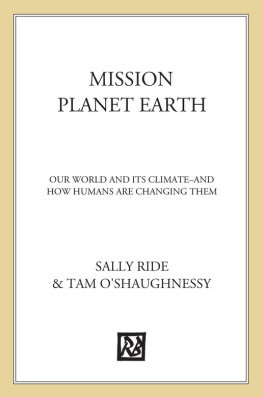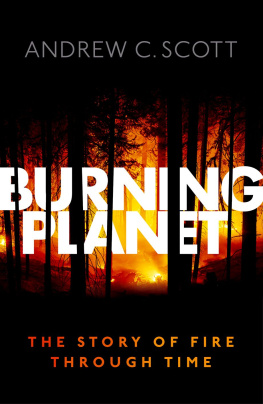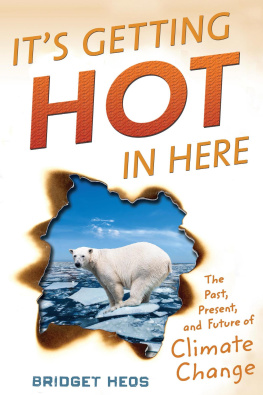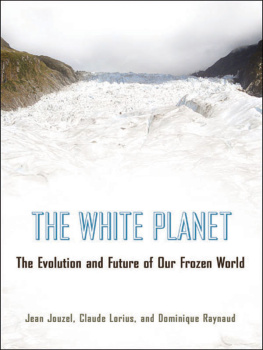Dedicated to Scouts everywhere.
Keepleaving the world better than you find it.
Illustrations
Preface
I first became aware of how much we are at the mercy ofclimate while growing up in East Africa. I was on safari in Tsavo National Parkhoping to see herds of bush elephant, but instead all I found was barren reddirt littered with bleached bones. Drought had always stalked East Africa butthis time the adults around me were calling it unprecedented and weremuttering about deforestation as the cause - nobody spoke of global climatechange in those days. We almost ran out of waterbefore the rains came.
Schooled on the rim of the Great Rift Valley, I learned thatthe valleys lakes Magadi, Naivasha, Elementaita, Nakuru, Hannington, Baringoand Rudolph (as they were known then) had once been much larger, and that our Homohabilis ancestors, who made the stone tools scattered at my feet, had doneso at the shores of lakes now reduced and distant. Dormant volcanoes came alivein legends of neighbors stealing each others flame, and fiery devils dancing.It was in Kenya I now realize that I fell in love with geology and all ittells us of our planets past.
I have split Your Life as Planet Earth into two parts.
The first is a fast-paced and lighthearted telling of thetwists and setbacks of our planets evolution, using the metaphor of a humanlifetime to make the story of our world and its climate more easily relatable.I show how the strands of climate, evolution, tectonics and cosmic eventstangled through time to drive changes in life and climate. Similar causes todaymust, logically, cause similar results.
In the second part, I explain the scientific evidence behindthe story in plain English. I directly address some common myths that preventmany people from accepting human-caused climate change and evolution, and Iexplore what the science tells us about our future as far as we can tell fromwhat we know of Earths past.
We cant make sense of our future until we make sense of ourpast.
Part 1:Your Life as Planet Earth
To understand how we came to be, we must start at thebeginning. To understand where we are headed, we must retrace the planetsodyssey of tectonic upheavals, lifes adaptations, climate changes and cosmicchances, to the origin of it all Earth, air, water, life.
The Earth made life, and once begotten life began to moldthe Earth fundamentally: chemically, physically and climatically. Earthshaped climate and climate winnowed life, repeatedly rewarding innovation,repeatedly wiping out the established and the maladapted. To understand ourfuture we must learn from those times. We are far from the first inhabitants ofthe planet to have experienced climate change, but we are the first capable ofunderstanding it, and the first to have choices in how we respond.
I want to show you how we got here by tracing the tangledthreads of life, climate and Earth through deep time to today.
But deep time is very hard to grasp. Just like the vastnessof deep space, it is so much beyond what we humans evolved to reckon intuitively.Instead I will tell the story of us, our climate and our Earth on the scale ofa human lifetime. For simplicity I will make that life 100 years long, and tomake it relatable I will ask you to imagine that YOU are planet Earth. Afterall, as you will see, your life and that of the planet have been uncannilysimilar.
Abbreviations
km kilometers
mi miles
C degreesCelsius
F degreesFahrenheit
cm centimeters
in inches
CO2 carbondioxide
1. Traumatic Childhood

A gentle smack brings you into existence - a mere speckamong specks, swaddled in soot and bathed in the soft glow of the Milky Way. Anorphan of old stars who died an explosive death, you are dust within dust in avast cloud of their ashes. Your midwife is a nearby supernova, her shock wavethe smack that awakened you. It nudged you into the dust around you, and gentlegravity now gathers dust to grains, grains to clumps.
You are not alone. Your siblings are all around you, specksand clumps like you, floating in dark dusty space. One clump of specks isgrowing faster than you and all your siblings. Being heavier, its gravity drawsin ever more gas and dust in runaway growth which begins to form the Sun. Theweight of all that junk compresses it tighter and tighter into a ball and heatsit to an ember, a crimson night light for your inter-stellar nursery. Aroundthis glow, the immense nebula of dust and gas with you in it starts tospiral inwards towards the new Sun, and this motion flattens the nebula into adisk that rotates around the Sun at its center. It is this rotation yourorbit - that protects you from falling to an infant death in the hearth at thecenter of the Solar System. Over your first 3 weeks of existence (3 millionyears in real time) you run a fever heat from the decay of short-lived radioactive leftovers fromthe supernova. This heat and the warmth of the early Sun melts specks intomineral beads call chondrules and sticks them together in sooty rocks as yougrow. Some of your siblings stop growing at this stage, doomed to remainforever as asteroids. But you go on growing at their expense, consuming anythat stray near you!
You grow fast. As you put on weight, you gather up ever morerock and dust until the pressure deep inside you builds to melting point, andheavy metals like iron and nickel gravitate to your core. By the time you arecutting your first tooth you are already almost as large as you are today.
A little after your first birthday (50 million years afteryour birth now illuminatesmyriad embryonic planets and asteroids in the Solar System for the first time.


